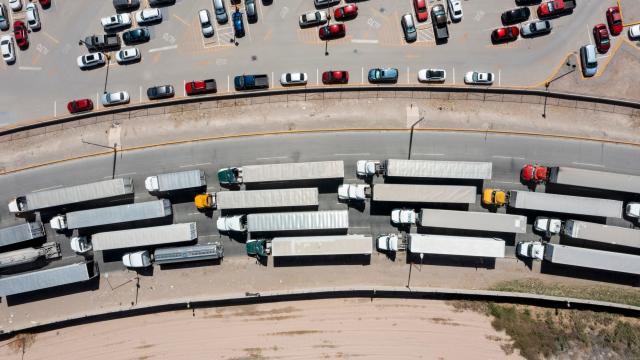Heightened Inspections Wreak Havoc with Cross-Border Supply Chains


By Jordan Dewart, Redwood
Increasing security protocols — including the new Carta Porte regulations that went into effect on March 31 — have been slowing the pace of cross-border movements for logistics teams. With US-Mexico trade accounting for $798.83 billion in 2023, any lag at the border can have significant economic impacts.
Unfortunately, those delays have increased exponentially with the implementation of new cargo inspection policies for the Ysleta–Zaragoza International Bridge which began on Saturday, April 27. The Texas Department of Public Safety (DPS) has been conducting enhanced inspections of all commercial trucks entering the US via the bridge, which connects Ciudad Juárez, Chihuahua, and El Paso, Texas.

These enhanced inspections — which Texas Governor Greg Abbott says are focused on reducing illegal immigration and narcotics traffic — are in addition to the cross-border inspections already conducted by US federal agencies at El Paso. According to Border Report, wait times have increased from one hour to more than eight hours at the bridge. Long delays are not only slowing product deliveries and increasing logistics costs, but creating unsafe conditions for drivers who can’t access bathrooms, air conditioning, food or water in the 90-degree heat.
Instead of sending their drivers, trucks and cargo into these conditions, many truckers are opting to wait out the enhanced inspections. While the DPS hasn’t made any official announcements, the heightened inspection protocols are expected to continue throughout this week. This isn’t the first time Abbott has authorized these enhanced inspections that dramatically impact trade, a move that US Customs and Border Protection (CBP) has previously called “unnecessary.”
For logistics teams that need to keep their goods moving, CBP has expanded its hours for routine inspections at two other border crossings —the Santa Teresa port of entry in New Mexico, and the Marcelino Serna port of entry in Tornillo, Texas. However, using these alternative border-crossing locations may take trucks hundreds of miles out of the way, resulting in significantly higher costs.
For Cross-Border Shippers, Disruptions Are a Fact of Life
While near-shoring production in Mexico has clear benefits, managing these kinds of disruptions has become a cost of doing business there. And, as both Mexico and the United States hold key elections this year, we can expect more political maneuvering and policy changes that have the potential to impact logistics.
How can companies capitalize on the nearly $800 billion opportunity represented by US-Mexico trade, while minimizing their risk exposure and successfully navigating disruptions?
The clear answer is to work with an expert partner with specialized capabilities in cross-border logistics to optimize your cross-border movements for speed, efficiency and cost-effectiveness — by minimizing loading and unloading times, streamlining intermodal movements, accelerating border crossing times, optimizing loads and routes, and maximizing the capacity of all assets.
When disruptions inevitably occur, a modern, full-service 4PL Mexico can apply its specialized expertise to determine the right course of action — balancing cost, service, sustainability, product perishability, driver health and safety, and other concerns. Whether it’s a natural disaster, geopolitical uncertainty, new customs policies, or fluctuating exchange rates, the right partner can help you weather the storm and drive the best possible results.
Jordan Dewart is the President of Redwood Logistics, Mexico.

Supply Chain Moves
Supply Chain Moves is a publication dedicated to the supply chain industry, particularly the companies, people and events that help drive global commerce.

